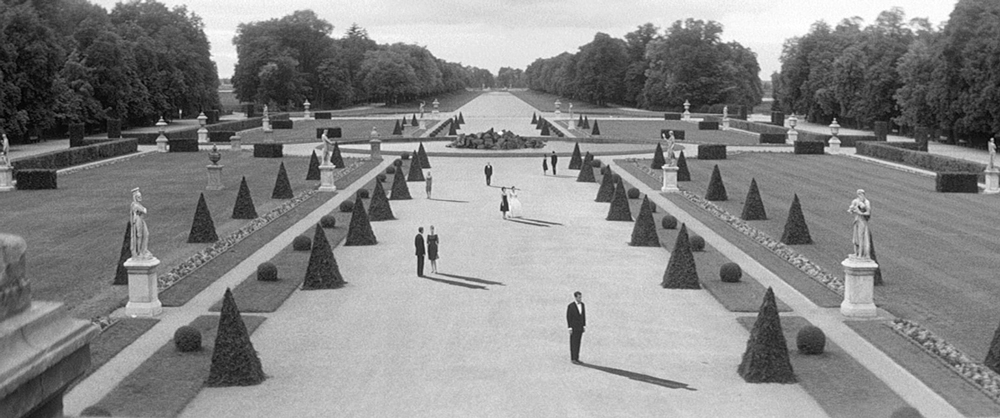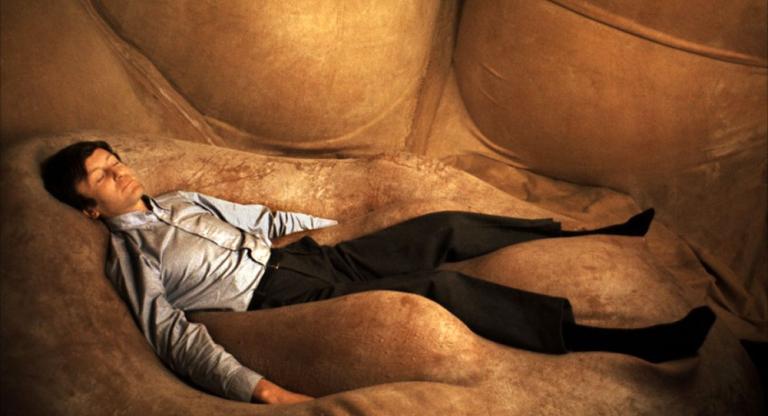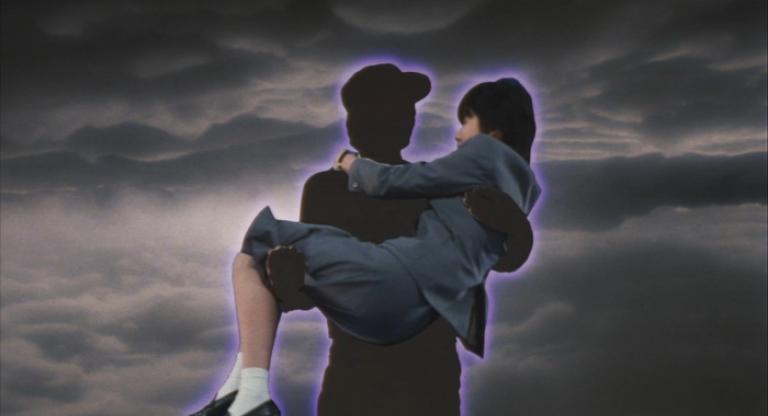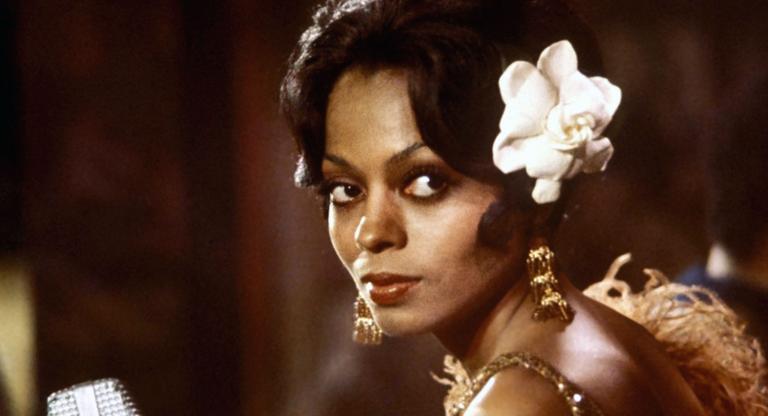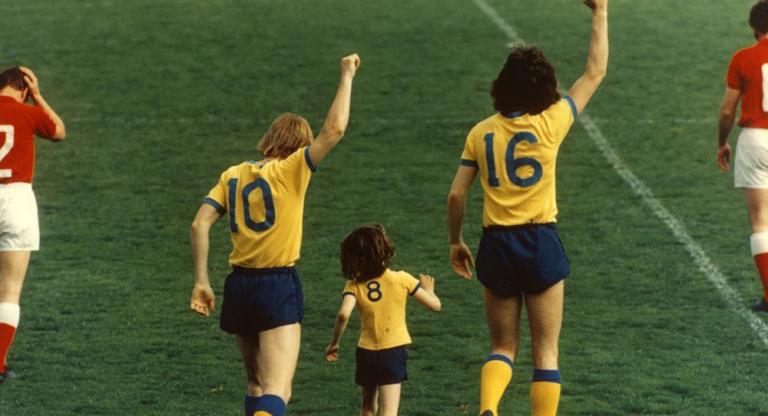You have seen this film before, or maybe you haven’t, or you don’t remember. “Boy meets girl, boy loses girl, boy tries to get girl back.” Substitute X for boy and A for girl and throw in M, who might possibly be A’s husband, and gloss everything in uncertainty before slicing up the narrative, throwing some of it away, and re-assembling the remains out of linear chronology (with a few indulgent repetitions), and you might have the script to Last Year at Marienbad (1961), directed by Alain Resnais. The crux hinges on X's conviction that he and A had an affair last year, although in the "present" A firmly asserts that she has never met him before.
Written by Nouveau Roman trailblazer Alain Robbe-Grillet (whose insistence on the “new novel” rejected conventional expectations of chronology and plot), Marienbad defies determinism by suggesting a scenario that never connects the dots. Maybe it’s a love triangle between X (Giorgio Albertazzi), A (Delphine Seyrig), and M (Sacha Pitoëff), but maybe it’s not: many theories have debated whether Marienbad portrays a real series of events, or a dream, memory, or fantasy in one character’s mind. Proposed memories are interlaced with the assumed present tense in a dizzying back-and-forth of black and white, with only the Chanel-designed costume changes alerting you to a scene change–except that when you realize some outfits were worn "last year" as they are "now," you are forced to admit that you cannot decipher the chronology with visual aids. Every scene is a ghost of another.
Methods of remembering had expanded and were improving rapidly by the time Marienbad was shot in 1960. Aside from moving images, photo booths had proliferated since the 1920s, instant photographs had been around since 1948, and consumer photo developing had become commercialized, especially color film. But you might have forgotten the details of your photographs by the time a roll of film had been developed, with no metadata at hand for reference. It is worth remembering that there is a material history of remembrance (calling cards, Victorian aides-mémoires, etc.) prior to today's memory devices, which increasingly border on near-total surveillance as technologies become ever “smarter” and omnipresent.
The period of Last Year at Marienbad is unclear. Early on there is fragmented dialogue regarding the years 1928–1929 and a fountain freezing; later X tells A that the fountain froze “last year.” If X is telling the truth, then the film takes place in the heyday of European sanitoria, those countryside retreats where fresh air and pampered relaxation were the wealthy guest’s cure for tuberculosis and other such ailments until antibiotics were developed in the 1940s. (See Thomas Mann's The Magic Mountain for a parody of both the Bildungsroman and the pre-war luxury sanatorium.) Marienbad is the German name for a real-life spa resort in the Czech Republic, where the benefits of mineral springs were believed to cure everything from constipation and fatigue to diseases; many people took holidays (or rest cures) there in the interwar period. M openly reminds A that they are "here" for rest, wherever "here" is for the characters, since the film was not shot in Marienbad but primarily at German palaces around Munich. Anyone believed to be "ill"—vaguely defined—might stay at a sanatorium for months at a time, often repeating visits or traveling between different resorts. X cannot tell if he had met A last year at Marienbad, or at the similar Frederiksbad, and A can neither confirm nor deny an answer to settle the matter because she is uncertain herself.
What makes Last Year at Marienbad so worthy of (re)watching is how malleable it will always be for interpretation: You can put forth several readings—enacted psychoanalysis, surreal dream logic, feminist fantasy, delusional coping—which may all be plausible, and none of which will be correct. Our characters can only rely on their fallible memories and the persuasiveness of others to serve as intangible evidence of the unrecorded past. Who is to say who is a reliable narrator when nobody can provide any proof? If A is there for her own rest cure, why should we assume that X and M are not? The other guests, dressed in echoes of 1920s affluence, are often faux-frozen like silent cinema, rendering them as props to the story or as unimportant details, faded in memory. If seeing is believing, then certainty is a spectrum in the eye of the beholder, ‘spectrum’ coming from the Latin for ‘ghost.’ Is a memory just a phantom sight in that case? Who can dispute you?
Last Year at Marienbad screens through September 1 at Film Forum as part of the series “Alain Resnais 100.”
